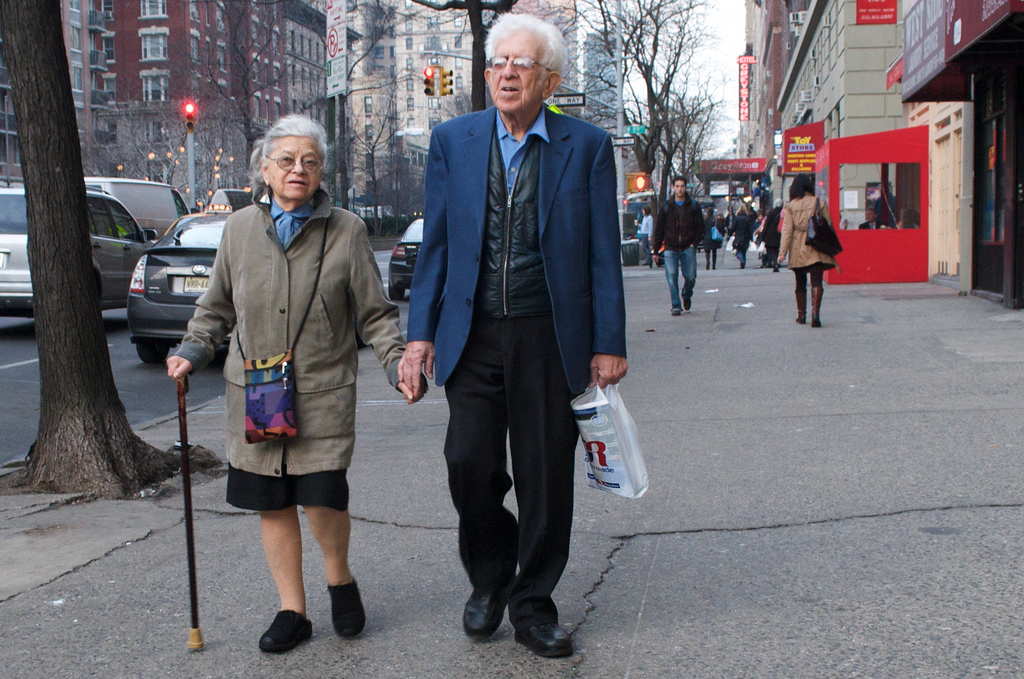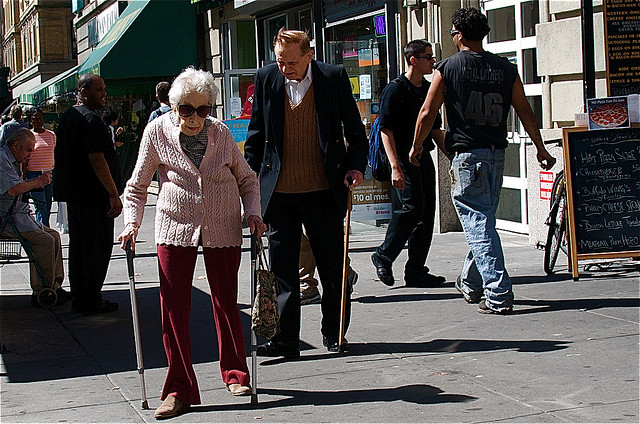
The excellent work that Dr. Larry Frank is undertaking at the University of British Columbia has been reinforcing the importance of walkable cities and places to keep citizens mentally sound, emotionally happy, and physically fit. The Australian journal “The Conversation” has now joined into the conversation and asks a simple question-what would happen if EVERYONE built 8,800 steps a day into their routine? Would this be a game changer for the health of citizens and for the budgets of nations that fund universal health care?
“Considering only the people aged over 55, at a minimum it would reduce the need for hospitalisation by 975,000 bed days per year, for a saving of $1.7 billion dollars. Given there are health benefits at other ages, and the less healthy Australians not represented in our study could benefit more, the actual benefit is likely to be even greater.”
The study classified people over 55 as inactive if they took 4,500 steps a day or less. An active senior took 8,600 steps a day. Just the simple act of doubling the steps, or increasing walking time to roughly 40 minutes a day reduced hospital days by a third.
“With governments searching for ways to reduce spending, and 16% of the federal budget being spent on health, tackling physical inactivity of individual patients, as well as ensuring our urban centres are walking- and cycling-friendly would make a major difference.”
Given these findings, does it make sense for Provincial governments to provide funding to municipalities to make communities more walkable for seniors, and provide safe comfortable linkages to shops and facilities? How can we further link the health benefits of walkable livable places to the well-being and longevity of residents?














A very astute post Sandy. Thank you.
It may be hard to contemplate doing 8,800 steps or 40 minutes of walking a day when Canadians are being pummeled by snow and hard rain. I would think that building walkable communities would eventually include indoor and weather-sheltered commutes. Mall walking is a now common phenomenon with the elderly who are often bused in from care facilities and retirement centres, and it has become a programmed social event with practical results.
Today you see care facilities spread out all over our cities. Very few are not car-dependent. The HandiDart is not an efficient service at the best of times, and when you’re stuck in the deep suburbs it can be annoyingly inconvenient. Most Canadian cities are now densifying their rail transit -linked malls with high-rise condos. Why not encourage even more diverse and fully mixed-use CD zones that include care facilities, schools and other public amenities than the traditional leave-it-up-to-the-developers practices?
It was heartbreaking to witness my mother give up even on the HandiDart service and be confined to her care facility 24 / 7 in a faraway suburb for the final two years of her life. Before that, she was quite independent and got out once a week via HandiDart, even though she was confined to a wheelchair for 12 years. But visitors were also limited by their extraordinarily long car trips. Had the facility been located closer in, their visits would probably have doubled.
Her experience taught this urbanist a huge personal lesson on how our deep and utterly shameful auto dependency has negatively affected almost everything in life in our society by redirecting city design towards cars and away from human beings. My mother and the majority of her fellow care centre residents would have fared so much better if they could have had the city literally at their feet, only an elevator ride away above an indoor mall with a rapid transit station somewhere inside, all universally accessible.
When we think of building walkable communities we must always keep in mind the complete life cycle of our families and friends, which makes universal accessibility one of the top considerations, something that goes way deeper than merely providing a ramp here and a push-button door opener there. To some, spending 30-minutes pushing a wheelchair is all the exercise they are able to conduct, but even that has measureable health benefits.
Author
Reblogged this on Sandy James Planner.
Cycling offers very similar benefits and has the advantage that over 1/2 of trips in Metro Vancouver are easy cycling trips.
I was at a transportation/health forum a few years ago and the conclusion was that health could be hugely improved if:
– communities were walkable/cyclable
– one could purchase healthy food in the community
– stairs were prioritized over elevators/escalators.
The last one is interesting in that when one enters a building one is immediately presented with a bank of elevators while one has to search out the staircase which is often locked.. This is true for hospitals and other health care facilities as well. It was not always so since there is an old hotel in Portland where one is greeted with a wide staircase and one has to wander the back halls to find the elevator. Wouldn’t it be great if we used such a design in new buildings? I am always amazed at how almost everyone uses the escalator in transit stations when there is a parallel staircase. I can walk up the stairs carrying my bike quicker than those using the escalator.